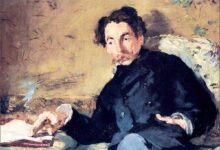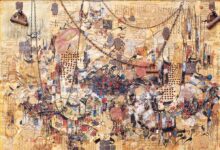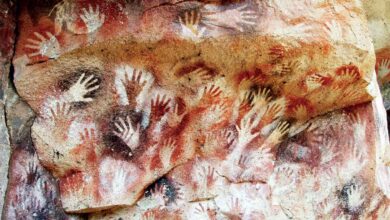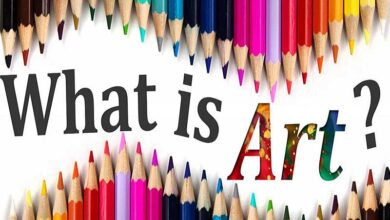The importance of art history in evolution of contemporary art
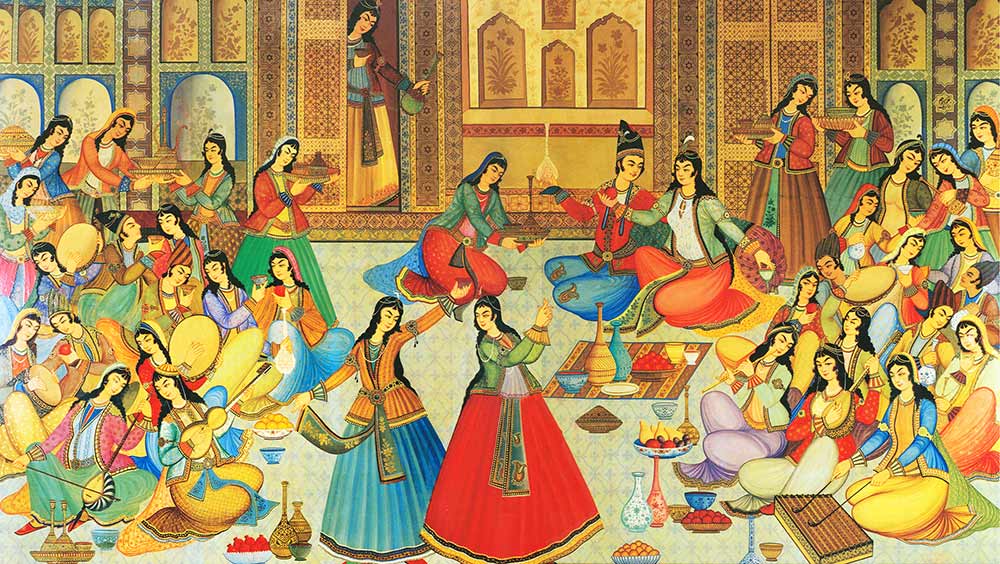
Alireza Karimi Saremi: History is defined as the time of occurrence of an event. History is a process in the present that has become the past over time; as the future holds, time will pass and our performance today will be a historic event for the future.
Here’s a question: Why should history be read?
The answer is that contemporary man needs to use the experiences and practices of his predecessors and other nations in planning to create a better life. When we pursue history wisely, and search for influential factors in our lives and the world in authentic history books, we are in fact trying to create new ideas to build a more beautiful world by becoming more aware of our past and ancestors. Become a wise human being with critical and constructive thinking.
It can be said that if every human being seeks the creation of things that have affected his life and the world around him in countless ways, he has begun a difficult task. Researching his ancestors, he finds that his mother tongue once did not exist, his religion was unknown, agriculture was not in use, animals were not yet domesticated, and once man did not even know how to light a fire. Researching these topics takes time and effort. But these researches are worth the effort, because they concern all of us who love the history of culture and art, and it is these researches that make us intelligent human beings.
Of course, our deep interest in history is not limited to the description of events that have taken place over different nations over the centuries, but the evolution of all human phenomena, which can also be full of mysteries, is another aspect of the science of history. Perhaps this is why the history of civilization and the history of art are among the most fascinating parts of history, because civilization and art are as vast as our human lives.
Abolfazl Bayhaqi, a historian of the fifth century AH, says: “My intention is to write a basic history and erect a large building, so that its mention remains until the end of time.” Abdolhussein Zarrinkoob believes: “History is neither a mirror of learning nor a record of ignorance and betrayal. True history is the life story of people who have lived and even died in it. But what matters to the historian is not how these people died, that How do they live? One can look at history as it is, with the help of which one can bridge the gap of time and see one’s present life in the lives of past and future human beings, but this benefit can only be achieved when “History should not be just the story of rulers and notables, it should be the story of all people and the life story of all classes.”
Peter Nathaniel Stearns says: “Only by studying history and the past can we understand how things evolved. Only through history can we understand the factors that have changed. Only through history can we understand that “What factors of an institution or society are involved in change?”
So history is not just a return to the past, but a true story of life. Understanding history is a tool for enlightenment and creating a deep perspective, which can have beneficial benefits for people today and tomorrow. History is a science that informs us of past events because it springs from wisdom and is a deep and extensive knowledge. History is a science to consolidate the thought of a nation, to achieve a new way of thinking and to create a dynamic and intelligent society that will bring with it reasoning, deep thinking and enlightenment. In some cases, we may come across parts of the history of nations, myths and fictional stories, and sometimes false and hateful, written out of hatred and enmity. In such cases, the historian considers the history of a nation to be so disturbing that it is far from reality. Undoubtedly, this is a betrayal because it makes it difficult to understand history and trust in it, and this distrust will lead to indifference and confusion for future generations.
History has different branches, the study of each of which is a means for modernization of those who are interested in it. One of these branches is “History of Art”, which always provides opportunities for thinking and contemplation in art. But how did the history of art come about? It should be noted that: “In 1764, a European named Johann Joachim Winckelmann, who studied the artifacts of ancient Greece and ancient Rome, first wrote a book on the history of art about this period. In this book, he introduced the architectural works, statues and sculptures left by these two civilizations. He used the term style and artistic periods to classify ancient artifacts and objects. He believed that style in any culture changes from generation to generation, and that style in art depends on the worldview of an individual or a society. Whenever the artistic productions of a society in a certain period have specific physical and structural features or offer a harmonious collection in part and in whole, the word style is used about it, such as classical or romantic style.
Winckelmann says about Greek art and the Renaissance: “Greek art expresses the religious, cultural and social life beliefs of the people of that time and Renaissance art is the result of the beliefs of the people of their time and the difference between their art is due to different beliefs of the two societies in two times. Is different from history. In the history of art, it is possible to understand what steps man has taken to reach his truth and ideals. The history of art introduces human creations from the dawn of history to the present and describes, describes and compares them. Art is the result of taste, the aesthetic sense of artists, their experiences and what they have learned. “By observing the works of art of the nations and peoples of the world, the human experience is enhanced and his horizons are broadened.”
Ernst Gombrich says: “I think gaining knowledge about the history of art helps us to understand why artists worked in a certain way or why they pursued certain goals. Above all, studying this history is a good way to sharpen our eyes in order to look more closely at the specific characteristics of the artworks and thus increase our sensitivity to their nuances. “
Now, in view of these valuable ideas, it is necessary to work with more curiosity and accuracy on the emergence of art and a careful study of the history of art, because what is observed about the emergence of different perspectives on contemporary art seems to have a historical background. It is one of the styles and schools that have emerged in the past. However, today, artists align the idea of history with their time and try to achieve a specific and up-to-date expression.
In this regard, Ali Ramin, the translator of the book Modern Art, writes on the first page of this book: “Perhaps one of the most important features of modern art is its reflection on cultural and civilizational fields other than Western culture and civilization. As we know, one of the sources of inspiration for the Impressionists in the beginning of their activity was Japanese painting and especially Japanese prints. Many Japanese prints were exhibited at the Paris International Exhibition in 1867, and as a result, Japaneseism, the French term for Japanese aesthetics, came to the attention of modern art circles in Paris. Japanese prints significantly influenced Impressionist painters in France, the United States, and other countries. This tradition of influencing non-Western cultural spheres from Gauguin and his influence on the life and culture of Tahiti residents, let alone in the twentieth century, is strongly followed by the inspiration of prominent artists such as Henri Matisse and Pablo Picasso of African masks and sculptures and Bedouin art. “As a result, the world’s attention is drawn to the artistic and cultural values of lesser-known peoples around the world and their specific language and artistic expression.”
Perhaps one of the thousands of influential examples from the history of art can be found in the valuable works of Jackson Pollock, the American painter, who became famous for his innovative painting methods. Pollock was influenced by surrealism, but gradually freed himself from the strange fantasies that overshadowed his paintings in order to experiment with abstract art. Troubled by traditional methods, he dropped his canvas to the ground and began dripping, spraying, and pouring paint on it to create stunning makeup. He probably had in mind the Chinese painters who used these unconventional methods, as well as the American Indian method of creating images in Shen for their magical purposes.
In the end, it should be noted that knowing the history of art, as it has had tremendous effects on the thought and outlook of the greats of world art, can also be effective in contemporary art today, and by knowing the past of art can achieve new achievements in thought and creativity. Found and art history can be a solid foundation for this great uprising in today’s art.
Therefore, it can be acknowledged with full certainty that knowing the history of art creates new ideas, along with creativity based on the knowledge of the past, in the minds of contemporary artists and will promote the evolution of contemporary art in the present.




